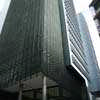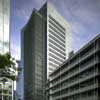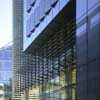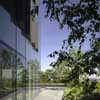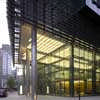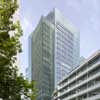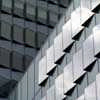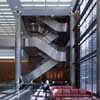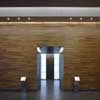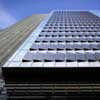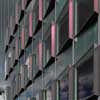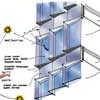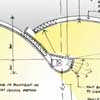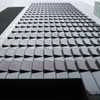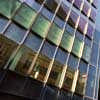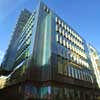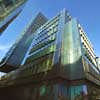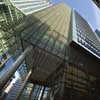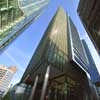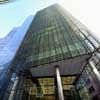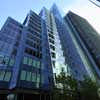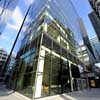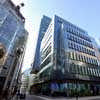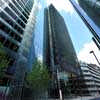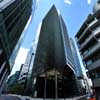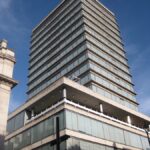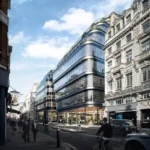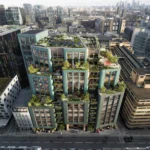25 Ropemaker London office building, British Land UK capital city property images, Commercial development project design photos
25 Ropemaker Building
EC2 Office Building: City of London Development design by Arup Associates.
post updated 16 February 2024
Date built: 2009
EC2, England, UK
Design: Arup Associates
Photo © Keepclicking added 10 September 2012:
Location: London EC2, England, United Kingdom
9 Sep 2012
25 Ropemaker Place
Ropemaker Place, a 21-storey commercial development designed by Arup Associates, is the first office building in London to be pre-certified for the US Green Building Council’s LEED “Platinum” Core & Shell rating.
EC2 Office Building Design by Arup Associates
Introduction to the Building Design
Designed by Arup Associates for the UK property company British Land, Ropemaker Place is an 81,218 sqm commercial development on the borders between the City of London and London Borough of Islington. Ropemaker Place was completed in May 2009, within three years from the initial acquisition of the land in April 2006.
The new 21-storey office building, with ground level retail, defied the economic recession and is fully let in a difficult market. It is the latest in the line of successful commercial office buildings for the same client that includes Plantation Place, Plantation Place South, Triton Square, and Watling House.
The site of some 0.5ha is bounded by Chiswell Street to the north, Ropemaker Street to the south, Moor Lane to the west and Finsbury Street to the east. The location provides excellent transportation links and convenience to occupiers, as it is triangulated by three London Underground stations and is near to the Barbican Centre with its extensive cultural opportunities. To the east are Liverpool Street station and Broadgate, with the City and its institutions beyond.
British Land purchased the site with the former 12-storey building having been fully demolished to the basement slab, and with an existing planning consent. Arup Associates was asked to review the consented scheme against British Land’s base building and sustainability brief and the market requirements for City commercial office buildings, and in particular to build on the successful paradigm of Plantation Place1, completed by Arup Associates in 2005. This led to a complete redesign that improved the overall massing and simultaneously delivered an increased net office area and a range of floor sizes more attractive to the market, from 3950m2 on the lower levels through to 2955m2, 2000m2, and 1100m2 on the upper levels.
The building was to be developed speculatively and – crucially – achieve completion by spring 2009 as a shell-and-core ready for multiple tenant fit-out. The brief was for flexible office and retail spaces attractive to potential tenants and suitable for multi-tenancies. The building had to provide market leading servicing provision with security of supply and resilience, and be adaptable to change.
Ropemaker Place provides a total of 55 000m2 net office space, 1270m2 of retail facilities, and more than 1850m² of roof garden terraces. It builds on British Land’s and Arup Associates’ ethos of sustainable design and the importance of technical and spatial flexibility for modern office buildings. It was designed to allow for large continuous floors with spacious open aspects, two designated trading floors, a legible circulation, and views over the City of London (Fig 2) and Islington Borough – in all, a desirable working environment of the highest quality.
British Land allocated design and construction to only two organisations: Arup Associates as architect, structural, and building services designer (supported with specialist consultancy from Arup and Townshend landscape architects), and Mace as project manager, construction manager, and cost consultant (with its in-house quantity surveyor, Sense).
This close collaboration of integrated teams was an undoubted success for the client. Paul Burgess, Head of London Leasing at British Land, said at practical completion in May 2009: “We are pleased to have reached this important milestone on time and on budget. With Ropemaker we will be delivering our most sustainable development yet in the City. Its ability to help occupiers reduce both operational costs and their environmental impact is combined with a great range of floor plates and a high level of specification to meet operational needs. The roof terrace gardens are of a scale and quality unparalleled in the City and are a wonderful feature for occupiers”. Evidently, these sentiments are echoed by tenants, as the building is fully let.
Ropemaker Place is rated BREEAM (Building Research Establishment Environmental Assessment Method) “Excellent”, satisfying the entire heating and hot water demand through passive design and renewable energy systems, and offering an array of other sustainable technical features.
The building was also recently awarded the US Green Building Council’s LEED (Leadership in Energy and Environmental Design) core and shell pre-certification “Platinum” level – the first office building in London to achieve this.
25 Ropemaker Office Building Design
Overall form
The overall architectural form was derived from several programme requirements, as well as responding to the local urban realm, rights of light, and daylighting requirements. The building was conceived as six large interlocking cubic volumes, ascending as a series of usable garden terraces, reflecting the larger City scale towards City Point Tower and Moorgate while respecting the smaller scale of the Islington borders. Designating the terraces as usable green roofs consigned all services plant to the basement levels and a roof plant enclosure above the top floor.
Although the site was not within any designated view corridors relative to St Paul’s Cathedral, the overall building height was determined by verified view studies, particularly from the Thames South Bank.
These showed that if it exceeded 110.00m above Ordnance Datum, the top of the building would be visible between the western towers of St Paul’s – controversial for both planning and heritage groups. This could have added significant unacceptable risk to the programme, so the height was limited to this level.
The planning authority also required that the massing along the northern site boundary of Chiswell Street be held at six storeys, with an agreed two-storey setback at the upper levels of approximately 3m from the street frontage, a condition already implemented in the recently-completed block nearby at 10 Chiswell Street (not Arup-designed). The planning authority’s requirement was to maintain the overall townscape massing on both sides of Chiswell Street, particularly in views along the street. Initial discussions revealed sensitivities regarding the previous consent on the site, where the mass of a tower element at the north-east corner did tend to be visible from these viewpoints.
One success of Plantation Place was to tune the building’s massing and elevational treatment to the immediate and broader setting, so that the creation of these large office floors would not overscale the City context. Ropemaker Place was similarly considered: not an “object” building but one that would be observed as a series of glimpses from the surrounding streets, and be a “good neighbour” to its setting.
Massing exercises determined that the most satisfactory form would be a series of diminishing orthogonal terraces ascending in an anticlockwise spiral from a low six-storey block covering the entire site footprint to a smaller plan 22-storey block on the south-east corner. This arrangement gave the variety already noted of net floor sizes ranging from 3950m² on the lower levels to 1100m² on the upper, with the opportunity to increase amenity and biodiversity by incorporating gardens on these terraces. Although this overall form broke the existing consent planning envelope, it was supported by the planning authority, as when viewed within the local and broader context it did provide clear townscape advantages.
Completed building photos from 5 Jun 2010:
7 Mar 2010
Construction Progress Update
Location: off Moor Lane, near Finsbury Circus
Location: 25 Ropemaker Place, London, England, UK
London Buildings
Contemporary London Building Designs
London Architecture Links – chronological list
London Architecture Tours by e-architect
London Architecture Photographs
Buildings + Designs close by:
Milton Gate, Chiswell St, City of London
Denys Lasdun Peter Softley & Associates
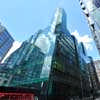
photo © Nick Weall
Milton Gate
Swiss Re Building – 30 St Mary Axe
Foster + Partners
Lloyds Building, City of London
Richard Rogers Partnership
Comments / photos for the 25 Ropemaker Building London design by Arup Associates page welcome.
Website: n/a

